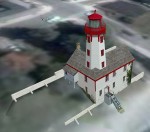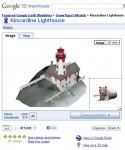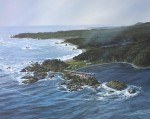Rev Father Brabant appointed Apostolic Administrator of Diocese pending appointment of an archbishop (Orth resigned due to fatal illness). Brabant is the only one of the local priests who was a priest under Bishop Demers, first of the bishops at Victoria. He remained since under Bishops Seghers, who was killed in AK; Brondel, Lemmens and Christie. Brabant is 62 and has been on this coast for 39 years, mostly engaged at Hesquiat among West Coast Indians. He is the authority upon the language of these Indians. It was in 1874 that in company with Bishop Seghers, the new apostolic administrator went to the West Coast, as passengers on Captain Spring’s trading Schooner Surprise. A machinist who went to install the machinery at Cape Beale lighthouse was also a passenger. During his long residence on West Coast Vancouver Island he has had many adventures, being shot on one occasion by superstitious Indians when a smallpox epidemic was causing illness amongst the tribesmen. He buried the victims of some wrecks, and had numerous adventures among the people of the island coast among whom he lived so long. [Colonist, 1908-05-05]
photograph: Banfield Creek Motor Lifeboat… now being repaired by Hutcheson Brothers, Victoria. Photo on Banfield Creek at practise. Lifesavers are practising rowing, with Captain Gullin at the till. Banfield Creek cable stn is seen in the background.
Dominion Government Steamer Quadra returned after landing gear for the lighthouse and wireless telegraph stn at Pachena Point, and will leave in a few days with Captain Gaudin, local Agent of Marine and W H Roebuck, fog alarm expert, on a cruise to lighthouses and aids of the British Columbia coast on an inspection tour. [Colonist, 1908-05-12, p. 10]
Captain Gaudin, marine agent, who was on board Dominion Government Steamer Quadra engaged inspecting lighthouses and fog alarms, has sent word that… the new lighthouse at Pachena Port, is being shown from a tower which stands on the top of the bank, at the extreme point. It is an octagonal wooden building, with sloping sides, painted white, surmounted by a red circular metal lantern. Height of tower from base to vane is 66’… describes flashing light… a white rectangular wooden doubled building with a hip roof has been erected NE of the lighthouse, on top of the bank, immediately behind a narrow gorge used as a landing place in fine weather… description of fog alarm… [Colonist, 1908-05-24]
Steamer Leebro left yesterday for Estevan Point and West Coast lighthouses, carrying a cargo of building material and machinery to be used in the completion of the lighthouse and fog alarm and wireless telegraph stn at Estevan Point. A lighthouse tower is under construction on the Southwest extremity of Estevan Point, locally known as ‘Hole-in-the-Wall’. The light to be shown from this tower when completed will be a 1st order triple flashing white light… A fog alarm building has been erected at this light station A fog alarm, consisting of a diaphone, operated with air, compressed by an oil engine, will be installed in the building this year.
A number of carpenters from Clayoquot were taken in a launch to Estevan to work on the new lighthouse. [Colonist, 1908-07-03]
Ottawa report… Harbors and Navigation… 4 lifeboat Stations – Clo-oose, Banfield, Ucluelet and Clayoquot.
A coast road in course of construction on West Coast Vancouver Island, 24 miles completed;
5 wireless Stations – Estevan, Pachena, Victoria, Port Grey and Cape Lazo; Kyuquot – Gas buoy; Estevan Point – lighthouse and fog signal in course of construction; Cape Beale – fog signal; Pachena Port – lighthouse and fog signal; Port San Juan – gas and whistle buoy… [Colonist, 1908-07-11]
Thomas Paterson, who for many years has had charge of the Cape Beale lighthouse, and who, with his wife, Mrs Minnie Paterson, has done so much in aid of shipwrecked mariners and to save life, has tendered his resignation as lightkeeper. Mrs Paterson’s trip over the sodden trail to send Quadra to save Captain Allison and 9 men from the wrecked Coloma and the work of her husband and herself, when Valencia went ashore won a great deal of praise. [Colonist, 1908-07-21]
 I received the following in an email today. Based on yesterdays’s MCTS announcement, I think this applies. Government thinking sometimes is so adverse to public wishes that I think government ministers must live in another universe.
I received the following in an email today. Based on yesterdays’s MCTS announcement, I think this applies. Government thinking sometimes is so adverse to public wishes that I think government ministers must live in another universe.





 The following extracts taken from early Victoria, British Columbia (BC) newspapers are credited to Leona Taylor for her excellent work in indexing the papers. Full information can be found here: ”
The following extracts taken from early Victoria, British Columbia (BC) newspapers are credited to Leona Taylor for her excellent work in indexing the papers. Full information can be found here: ” Quarters and Rations (Q&R), seen on many Canadian government employee pay cheques as
Quarters and Rations (Q&R), seen on many Canadian government employee pay cheques as